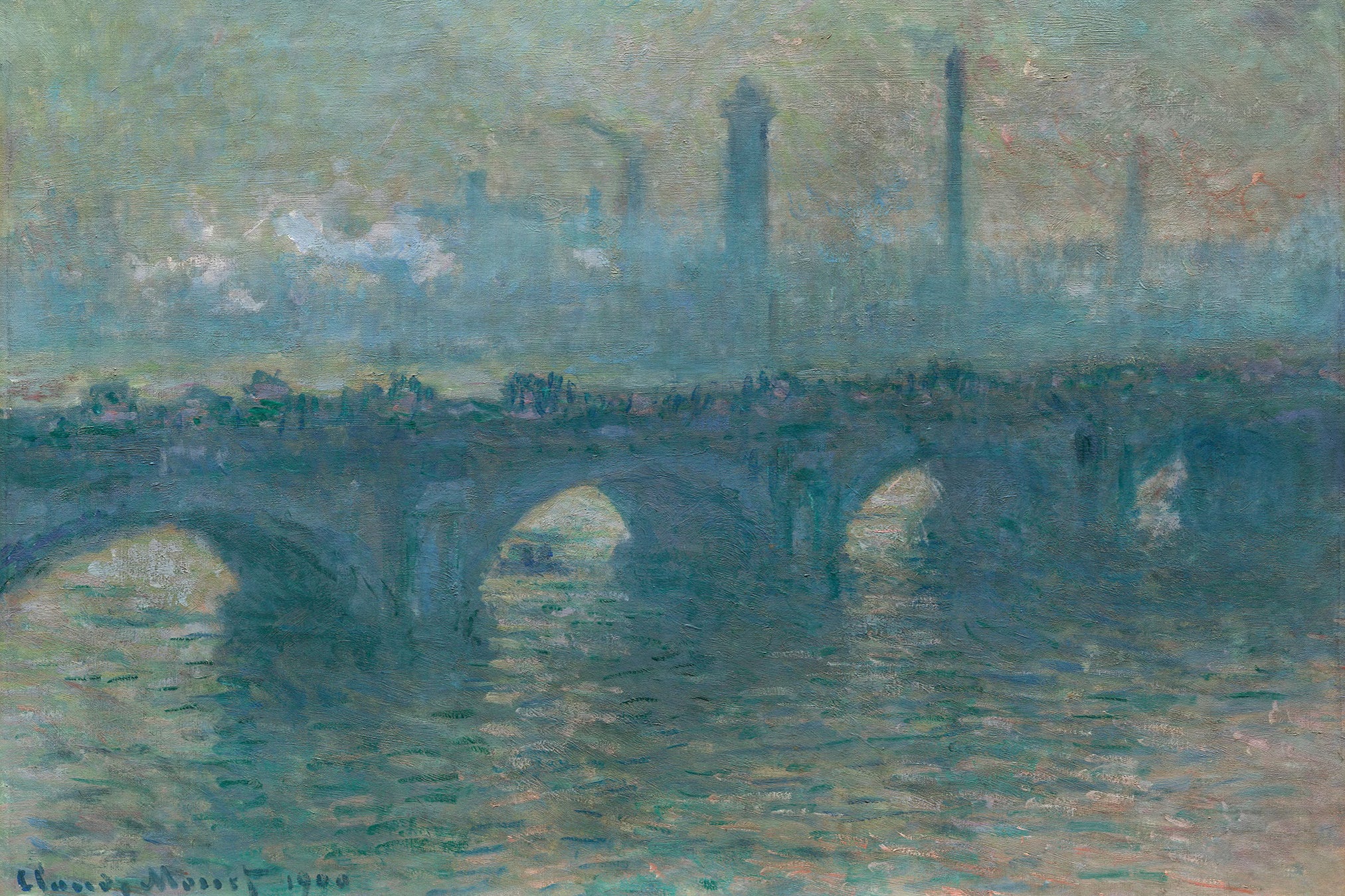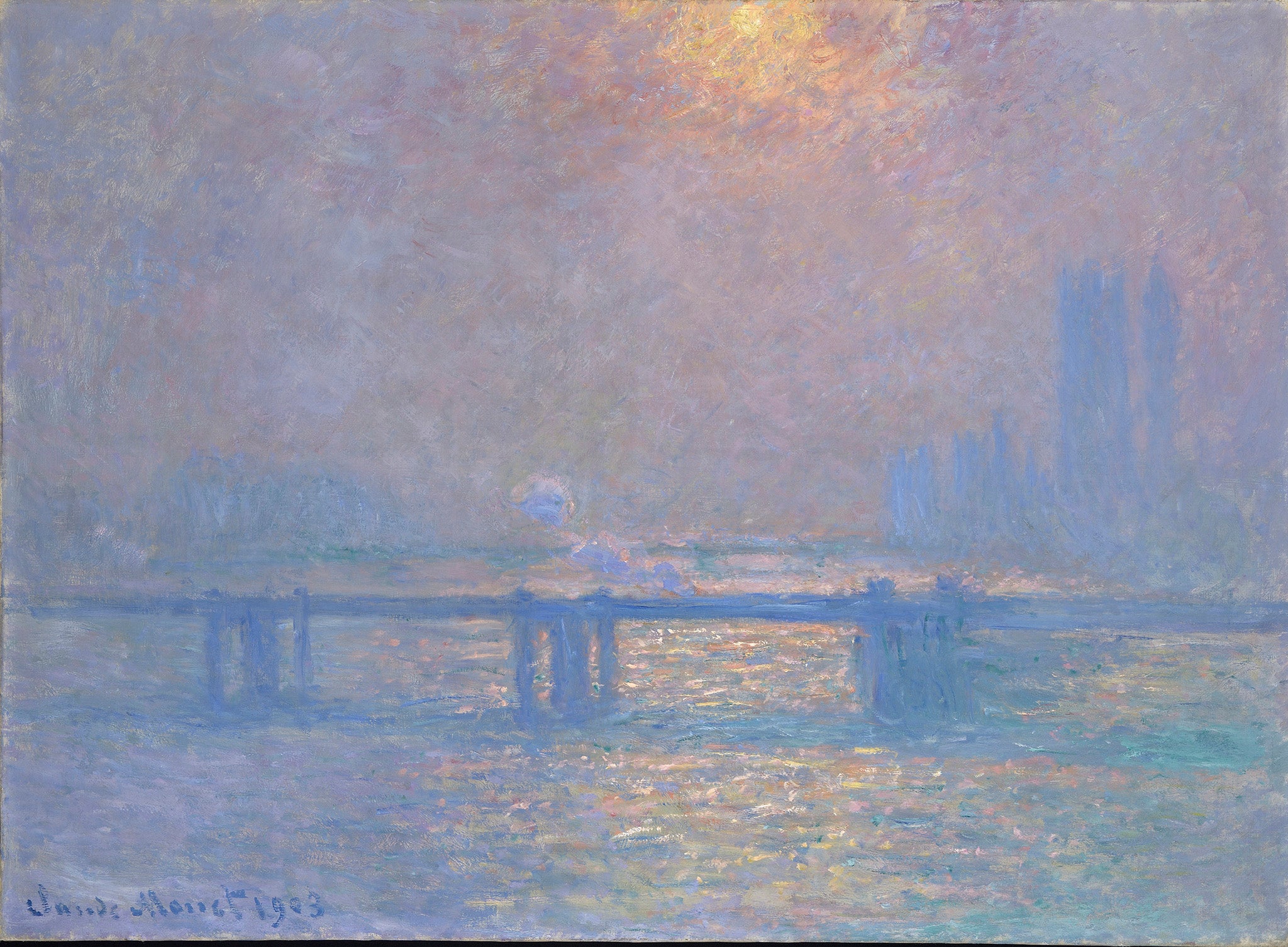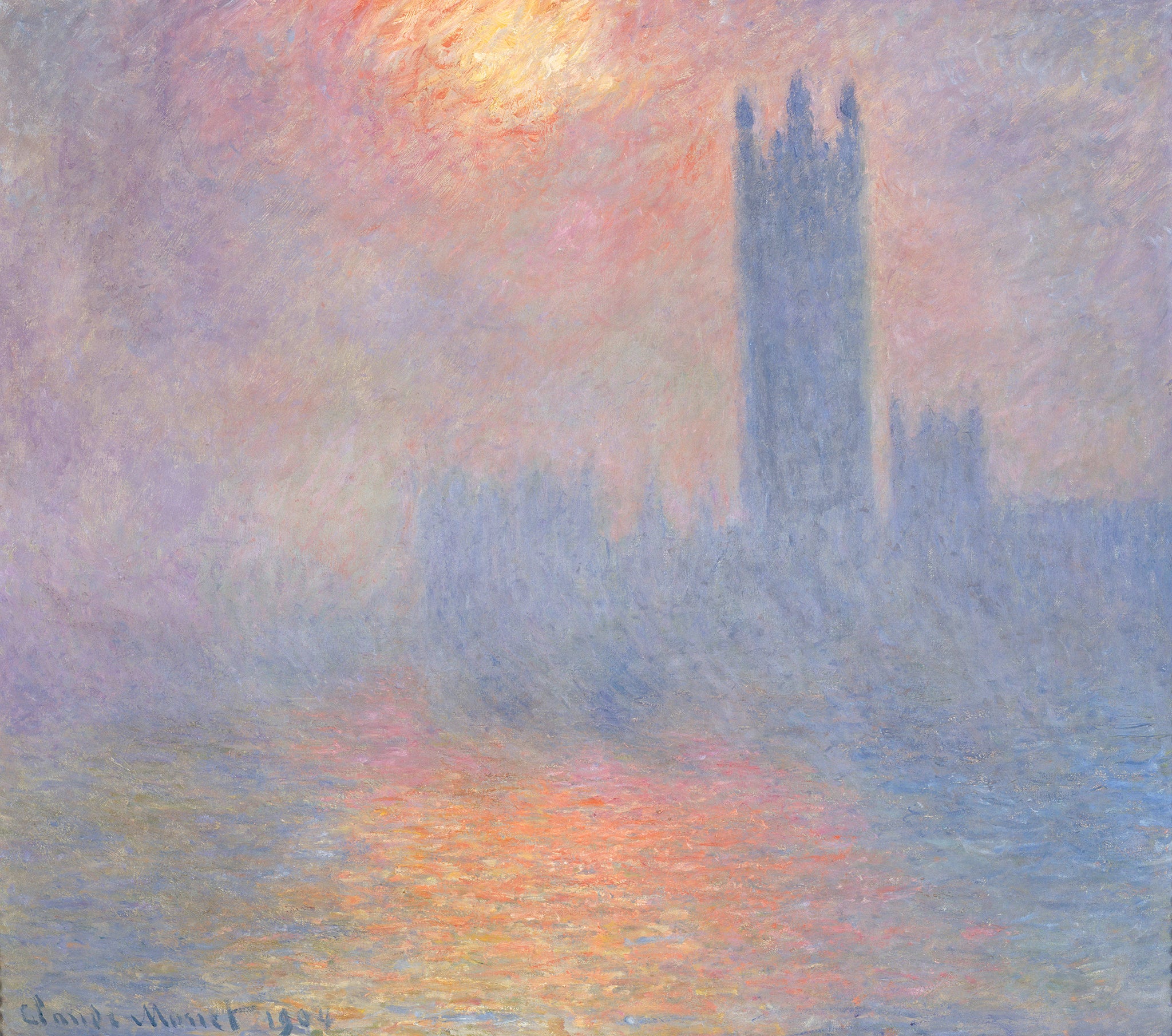Monet and London – Views of the Thames review: An extraordinary feat
During Monet’s lifetime, Brits remained unimpressed by the Impressionist painter’s views of London – a remarkable new show at the Courtauld demonstrates how wrong we were

Trends come and go, but Claude Monet is still jostling with Vincent van Gogh for the position of World’s Favourite Artist, just as he has been for the past 40 years. And advance demand for tickets for this exhibition of Monet’s London paintings suggests there’s still a huge public appetite for the work of the Father of Impressionism.
This autumn sees these two titans going head to head in London. With Van Gogh: Poets and Lovers packing them in at the National Gallery, Monet and London at the Courtauld Gallery manages the extraordinary feat of substantially recreating a landmark 1904 exhibition of Monet’s paintings of the city, in a gallery situated just 300yds from the Savoy Hotel, where the majority of them were painted. With the works hung as the painter himself intended, or as near as can be known, this is as close as we’re going to get to Monet on Monet.
Yet these paintings have never been among Monet’s best-loved works – or not on this side of the Channel. If we look to Impressionism for a life-enhancing continental holiday of the mind, subjects as bluntly and unromantically British as the Houses of Parliament or Waterloo Bridge in the rush hour seem incongruous, even slightly absurd, rendered in Monet’s shimmering iridescent colour. And to return the compliment, Monet himself was highly ambivalent in his attitude towards London and the British.
He regarded his first stay in London in 1870-71, in exile from the Franco-Prussian war, as something of a nightmare. Cooped up in a room off Leicester Square with his depressed wife and screaming child, Monet couldn’t sell any of his paintings of the river and London parks. And he was bemused by the fact that British artists didn’t seem to even see the thing he found most interesting about London: the toxic fog that formed an “envelope”, as he put it, around the British capital. Was he going mad, or had the British got it completely wrong?
One step over the threshold of this remarkable exhibition will be enough to convince that Monet was completely sane and the British had, of course, got it completely wrong. All the things we expect, and want, from Monet – the shimmering effects of light on water, sumptuous colour, and a soothing palette of endlessly varied lilacs and blues – are evident in a glance around the first room, and in works of the very highest level of artistry.
The 21 paintings were all produced during and shortly after Monet’s return to London in 1899, by which time he was one of the most famous artists in the world. He was haunted by his initial visit to London, and the sense that he hadn’t done full justice to the effects of light and fog on the Thames. Now he had the resources to take an entire suite at the Savoy, from where he commanded magnificent views of the river, and had the opportunity to show the British how it should be done.
There are essentially only three views in this exhibition: the vista west of his hotel, of Charing Cross railway bridge; the view east, with Waterloo Bridge just below him; and straight-on views of the Houses of Parliament, captured from a balcony on St Thomas’ Hospital, which is still there today.

When the subject matter is as limited as this, the artist needs to be sure each view is offering something new and different, not just minute variations on a theme. And Monet doesn’t fail us. Each time he approaches the window, the light has completely changed, and his practised brush and palette seize upon it with a kind of majestically serene immediacy, as though he’s never seen the view before.
Charing Cross Bridge, Fog on the Thames (1903) recalls Monet’s breakthrough work Impression, Sunrise (1872), the painting that gave its name to Impressionism, with its slashes of tingling orange across a cool, blue-dominated riverscape. But where boats and buildings were clearly visible in the earlier work, here form is almost totally dissolved into near-abstract masses of ethereal turquoise and lilac.
Streams of smoke from hurtling trains bisect the canvas in Charing Cross Bridge, Smoke in the Fog: Impression (1902), creating a sense of speed across Rothkoesque colour fields of bilious orange and green.
A shift in the light brings the Palace of Westminster looming into view in Charing Cross Bridge (1903), with the sun hitting the river in shimmering masses of orange on turquoise of the kind every fan of Impressionism knows and loves (even the show’s tote bag is themed in these colours).
Yet spontaneous as these paintings seem, the dates confirm that they were all completed – given “one final toilette”, as Monet put it – back in his Normandy studio, sometimes years after the event. Far from simply daubing down what was in front of him – almost mindlessly, as denigrators of Impressionism tend to think of it – Monet was by this stage synthesising different views and perceptions of moments in time, a process that was far more complex and multifaceted than he is generally given credit for even by many of his admirers.
And it’s not all diaphanous mists. The slightest change in light brings man-made structures lungeing almost brutally into focus. The views of Waterloo Bridge have the greatest energy, with crowds of commuters and fleets of open-top buses surging across the bridge’s dark bulwarks in Waterloo Bridge, Overcast Weather (1900), as clouds of smoke erupt from the forest of chimneys where the National Theatre and Tate Modern are now. If this is a fiercely urban painting, the same elements are reduced to vaporous purplish blurs in Waterloo Bridge, Morning Fog (undated).
Monet’s increasingly abstract approach is most evident in seven of his iconic views of the Houses of Parliament. The painter John Singer Sargent, who visited Monet at the Savoy, was astonished to find his rooms filled with paintings at various stages of completion, with the artist darting between them, brush in hand, adding a touch here, dabbing out a smear there, treating them as a quasi-symphonic total work of art.

In The Houses of Parliament, Sunset (1904), the buildings’ immemorial silhouette is reduced to a brooding graphic outline, with the pale sun barely irradiating the surrounding sky. In The Houses of Parliament in the Fog (1903), they’re the barest ghost of a presence in a study in varied lilacs, while The Houses of Parliament (1904), in which both sky and river appear to be exploding into flame, looks like everybody’s idea of the ultimate Impressionist painting.
And is there something very slightly odd about looking at a great proto-modernist experiment centred on a collection of buildings that’s as British as the HP Sauce bottle that still bears its image, where we know that Starmer and co will be yelling at each other even as we gape at Monet’s achievements? Only very slightly. Impressionism wasn’t about creating pretty pictures – whatever we may think today; it was about embracing modernity in the form of railway stations, power plants, and what were effectively oversized Victorian tower blocks, like the Houses of Parliament, which were as controversial for their scale in their day as the Shard has been in ours.
While the exhibition we see recreated here was a great success, Monet was dismayed to observe that none of the buyers were British. After all his efforts, we still hadn’t got the message. So the anticipation for this show is heartening. Well over a century on, it seems we have finally got the point.
‘Monet and London: Views of the Thames’ is at the Courtauld Gallery from 27 Sept to 19 Jan, 2025
Join our commenting forum
Join thought-provoking conversations, follow other Independent readers and see their replies
Comments
Bookmark popover
Removed from bookmarks